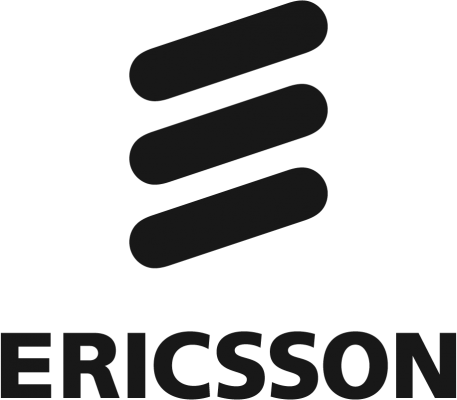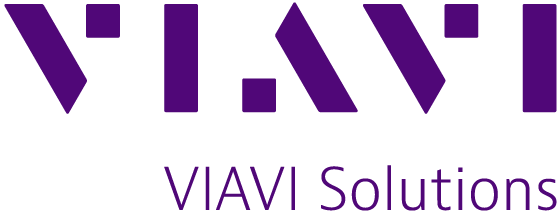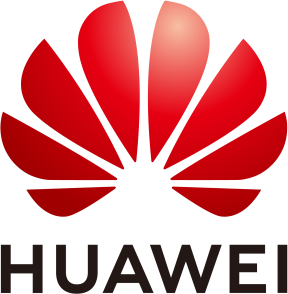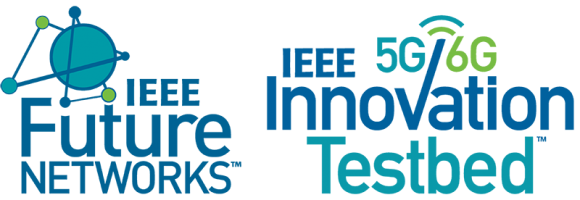Please be sure to join us in the Exhibit Hall for our Podium Pitches.
See schedule and details below:

Day: Monday, 10 June
Time: 11:00 – 11:15
Viavi Solutions
Title: Overview of Demo Sessions
Motivation: To provide an overview of the industry demo program and schedule.
Abstract: Brief overview of the three scheduled demo sessions over three days: PHY Technologies & RAN Intelligence; Security, Safety and Coverage; and Business Processes, System Models and Network Configuration.
Day: Monday, 10 June
Time: 11:15 – 11:30
Mathworks
Title: Exploring 6G enabling technologies with MATLAB
Motivation:
6G research and development is firmly underway. 6G systems may introduce new applications through use of enabling technologies such as artificial intelligence (AI), ubiquitous coverage through non-terrestrial networks (NTN), reflective intelligent surfaces (RIS), joint communications and sensing (JCAS), and low-power wireless communications. You can accelerate your 6G system design with modeling, simulation and testing using MATLAB.
- Leverage open, editable, and customizable 5G algorithms as a starting point for your 6G design.
- Continuously test your designs with the easy custom waveform generation, hardware connectivity, and AI modeling capabilities.
- Simultaneously optimize the digital, RF, and antenna array components of your 6G systems, enabling you to explore multidimensional design space more effectively.
Content:
Learn how to explore some of the 6G enabling technologies. This includes how to:
- Generate 6G candidate waveforms with parameters extending beyond the limits of the 5G NR specifications.
- Simulate 6G-candidate links, including transmitter operations, channel models, RF impairments, and reference receiver algorithms. Compute metrics including throughput and EVM.
- Evaluate 6G link performance in 7–20 GHz, mm-Wave, and sub-Terahertz ranges.
- Model reconfigurable intelligent surfaces (RIS) and experiment with propagation scenarios with and without the presence of blockages.
- Apply AI techniques to solve 6G wireless communications problems.
Accelerate your 6G simulation by using multicore computers and clusters.
Day: Monday, 10 June
Time: 16:00 - 16:15
Introducing Al/ML Connectivity Optics: Perspective of Optical Transceivers and It’s Applications
Presenter: Dr. Frank Chang, CTO, Source Photonics
Bio: Source Photonics | Optica
Motivations: High-end optical transceiver products are crucial for data centers and telecommunication, and with the outbreak of large AI models and computing power requirements, the market demand for optical transceiver modules, especially high-end module products are growing rapidly. Generative AI has the power to disrupt society much like the internet has over the past four decades. Source Photonics has a strong competitiveness in its optical transceivers that meet different rate requirements, which is widely used in data centers, transmission networks, 5G, access networks and other scenarios, the high-speed optical module products used in new data centers, like 400G and 800G, have achieved mass production. In terms of chip manufacturing, Source Photonics has the capability of designing, manufacturing, and mass delivery of 25G, 53G, 106G EML and 25G DFB chips. Benefiting from its ability of independent R&D and production of high-speed lasers, Source Photonics is able to avoid supply chain risks, effectively control the cost of optical chips, realize the efficient R&D and delivery of next generation optical module products, and secure the supply of DFB and advanced EML chips in the face of the shortage in the global market.
Abstract: This is a tutorial to introduce Al/ML connectivity optics, which is red hot currently in enabling the AI Wave Sparked by ChatGPT. The confluence of AI advancements and the optical transceiver market heralds a new era of high-speed and efficient data transmission. The transformative impact of AI on data center networks underscores the pivotal role of optical transceivers. In this pitch, we focus applications on inter- and intra- data-center traffics with Ethernet data rates increasing rapidly. Optical transceivers capable of supporting 400Gb/s have become the stage of volume deployment. One critical area affecting optical connectivity requirements is for the scenarios of transmission distances of 2-40km. In this pitch, we will review the evolving state of proliferate 400G technologies for these applications and the requirements such technologies should meet. It will begin with a look at the 100G optics which are currently being deployed in volume for 100G LR4, ERL4 and ER4, and will also compare the technologies available for even up to 80km. At 400Gb/s, we will examine the performance trade-offs between LR8 vs. LR4 for 10km, and among ER8 vs. ER4 vs. ZR1 for 40km-like distance. Finally, we will review how to apply these well-established 4/8-lane optics packaging for emerging 800G and/or 1.6Tb/s applications such like 2xFR4 and LR8. In short, as we anticipate 2024, the year of 800G optical transceivers, while 1.6T transceivers represent the future, businesses can always rely on Source Photonics to navigate the complexities of the AI era and build resilient, high-performance networks that pave the way for a future of limitless possibilities.
Day: Monday, 10 June
Time: 16:15 - 16:30
Sponsored by: Ericsson
Tuesday, 11 June
Time: 11:00 – 11:15
CableLabs
Title: Advancing the Way We Connect
Motivation:
The highly anticipated ICC2024 is taking place in Denver this year, solidifying the city's status as the major hub of the Cable Industry. As the research arm of the cable industry, CableLabs, headquartered in Denver, is driving innovation, and pushing the boundaries of what's possible in global broadband technology. With its cutting-edge research and development initiatives, CableLabs plays an important role in supporting the ICC event, ensuring the success of ICC2024.
Content:
In this pitch, our goal is to introduce you with the unique position of CableLabs within the Cable Industry. We will delve into our core technology areas and highlight our active working groups that specialize in optical and wireless/mobile technologies. Get ready to discover the innovative world of CableLabs and the groundbreaking work we are doing in broadband networking fields!
Day: Tuesday, 11 June
Time: 11:15 - 11:30
National Instruments
Title: A Practical approach to implementing AI/ML for 6G.
Scope: Embedding AI in RF/ Wireless is a key trend to improve the efficiency of mobile networks for power, spectrum and performance. It is already being discussed as part of 3GPP standardization Rel 18/19. One of the biggest challenges for using AI technology in wireless communications is to ensure that it works reliably and robustly under practical deployment conditions. This requires new validation and test approaches of these data driven devices because stimulus-response based testing systems may not be sufficient anymore. NI created a USRP based system level benchmarking platform for researchers and engineers that allows to compare performance of the new AI enhanced wireless devices against traditional approaches as well as to detect and analyze failure cases
Day: Tuesday, 11 June
Time: 16:00 – 16:15
Future Networks
Title: IEEE Future Networks INGR LITE
Moderator: Fawzi Behmann, President, TelNet Management Consulting Inc.
Motivation:
IEEE Future Networks is celebrating the first year after successful transition from an initiative to a technical community with support of 9 societies and sustainable INGR roadmap in its 3rdedition and wide range of events that vary from forums to webinars, challenge, and Standardization efforts.
There is a need for growth by extending the reach to the market, societies, customers, and other consortiums and establishing regional expertise.
The Podium talk will briefly address.
- Introducing INGR-LITE by taking a holistic view and addressing long-term challenges for future end-to-end networks across industries / verticals and applications and services.
- Focus on Ecosystems and sample use cases such as public safety, telehealth, smart city and importance of governance both strategically and tactfully!
- INGR Lite adds the dimension of end-to-end functional flow that can be demonstrated with test bid for select scenarios.
- Build INGR regional expertise engaging with local industries, customers, and sections/chapters!
Day: Wednesday, 12 June
Time: 11:00 – 11:15
Title: IEEE 5G/6G Innovation Testbed – A Platform for Industry-Academia Collaboration
Presenters: Ashutosh Dutta, Co-Chair
Anwer Al-Dulaimi, Co-Chair
The IEEE has built 5G/6G Innovation testbed that will allow a virtual testing and experimentation platform to accelerate network innovations. This platform hosts an end-to-end 5G network in the form of a private network that incorporates all segments from RAN through core network. This testbed supports various 5G enablers, including edge cloud, virtualization, network slicing, and orchestration. The platform is meant primarily to help industry emulating the functionality and behavior of 5G and Beyond 5G networks. The goal of this project is to develop a collaborative platform that brings value to individual member companies while encouraging and facilitating reduced-cost industry- centered innovation in collaboration with academia, governments, startups, operators and vendors. The project continues to recruit new industrial members who are willing to transform the current standard technology with visionary ideas to user-oriented networks that support vertical industries. In addition, the platform encourages participation from academia to stimulate next-generation network advances and easy collaboration opportunities between academia and industry.
The podium pitch introduces the industry and academic communities to this unique IEEE 5G/6G Innovation testbed and describes how this platform can fulfil the needs or can complement other existing industrial and research testbeds. In addition, the podium pitch will also explain various participation models, hub and spoke connectivity and how this testbed can be used as a platform that will allow industry, academia, and government from around the world to collaborate and develop proofs of concept for use cases supporting various verticals.















